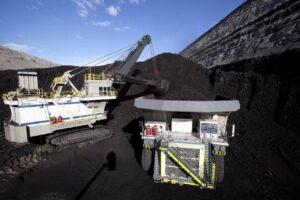Last week, a couple of media outlets got a little excited over the inclusion by the auditors of solar dye pioneer Dyesol of an “emphasis of matter” in its interim accounts – namely that if the company failed to raise sufficient funds, it may not be able to continue as a going concern.
As dramatic as it sounds, to the directors of Dyesol it was old news, and simply reflects the travails of being a cash-flow negative technology start-up in a listed environment. Virtually the same words were used in last year’s annual report, and on several other occasions before that – ever since the company first listed on the ASX in 2005.
“If we were in the US, we would be a venture capital (funded) company,” says Sylvia Tulloch, a director and co-founder of the company. “But that doesn’t happen in Australia.” Instead, like other local technology start-ups, Dyesol is forced to raise capital on the ASX and has to endure the hand-to-mouth existence of regular fund raising to keep enough money coming through the door to pay for R&D into dye sensitised solar cells – at least until the day that manufacturing starts and serious revenues begin to flow.
Dyesol, however, has been having a rough year, and the funding task has become more challenging. In the last 12 months, its stock has slumped from 85c to its current record low of 17c (It’s record high is $2.10 in August 2007).
Tulloch blames two factors. The first was an equity line of credit that was used to bring in more funds. The company found that it was diluting the share price, so it brought it to an end last week. “We are not the only company to be caught by this, but at least we have gotten out of it,” she told RenewEconomy in an interview
The company has replaced that with a share purchase plan to raise around $6 million (half of it is underwritten by Austock Securities), but the scope of the raising has been curtailed by the share slump, and caused some R&D to be curtailed. “It’s a rough market,” Tulloch says.
The second factor weighing on the company’s shares has been the global slump in solar stocks caused by the oversupply from Chinese solar companies and the crunch on margins and profits. Tulloch says although this has little to do with Dyesol’s model, the knock-on effect is probably only to be expected give its stock also rose in conjunction with the global surge that occurred before it.
Tulloch says DyeSol’s model differs from most other solar stocks because rather than trying to sell a separate product such as a solar panel, it is seeing to integrate its technology with products that already exist, such as steel roofing via Tata Steel, or into glass products via its joint venture with Pilkington.
“What we do is make material that adds solar functionality to other products – building products such as glass with Pilkington or steel with Tata,” Tulloch says. “They want to add another value add to product, they’ve already got customers for their product, they just want them to pay more. It is a different marketplace. At some point we have got to communicate that to the market.”
Dyesol in the last six months reported a $5.4 million loss but has flagged it will cut spending by around 30 per cent, and has also suspended payments to directors until these savings are delivered. And it has flagged a board restructure, which may impact the two co-founders, Richard and Sylvia Tulloch, although Sylvia Tulloch told RenewEconomy she would reamin on the board.
During the half, Dyesol said it made good progress with its testing for the Welsh manufacturing facility with Tata, and the Ohio testing with Pilkington. It has also started a relationship with electronics giant NEC for using its technology in consumer electronics products.
Meanwhile, US-based research group NanoMarkets last month predicted that the building integrated photovoltaic (BIPV) glass market will rise five-fold to more than $6 billion over the next five years, and highlighted Dyesol as one of the key companies to watch (along with Mage and Suntech).
It highlighted that BIPV technologies currently being used are relatively primitive and are expected to evolve into “true integrations of PV and window glass”, using the sort of technologies – such as dye sensitive cells – proposed by Dyesol.
The report also echoes a prediction made last year by the International Energy Agency, which suggested that the cost of BIPV would be effectively “invisible” because it would be part of the standard offering for buildings.
“We see a growing role for BIPV to satisfy building codes that call for zero-energy buildings,” the report notes. “By spreading costs across both the building energy system (or part of it anyway) and the building fabric, it becomes possible to create a new economics for PV that – at the very least – will increase the size of its addressable market.”
It said more than 20 firms are playing an active role in the developing the BIPV glass market, but a handful stand out as “firms to watch”. These include Mage Sunovation and Dyesol, who it says are showing innovation on the materials front, while Pythagoras is demonstrating how optics can be used to improve BIPV glass performance. The report says Suntech, the largest photovoltaic panel maker in the world, has dabbled in this area and may have the ability to transform the BIPV glass market by applying the Chinese style economics that currently dominates the conventional PV sector.
Note: The inventor of the dye sensitised solar cell, Professor Michael Grätzel, has been awarded the prestigious 2012 Albert Einstein World Award of Science for his achievements in inventing and developing the Grätzel Cell, the dye-sensitised solar cell, which is regarded by many as the single most important breakthrough in the development of sustainable energy.








